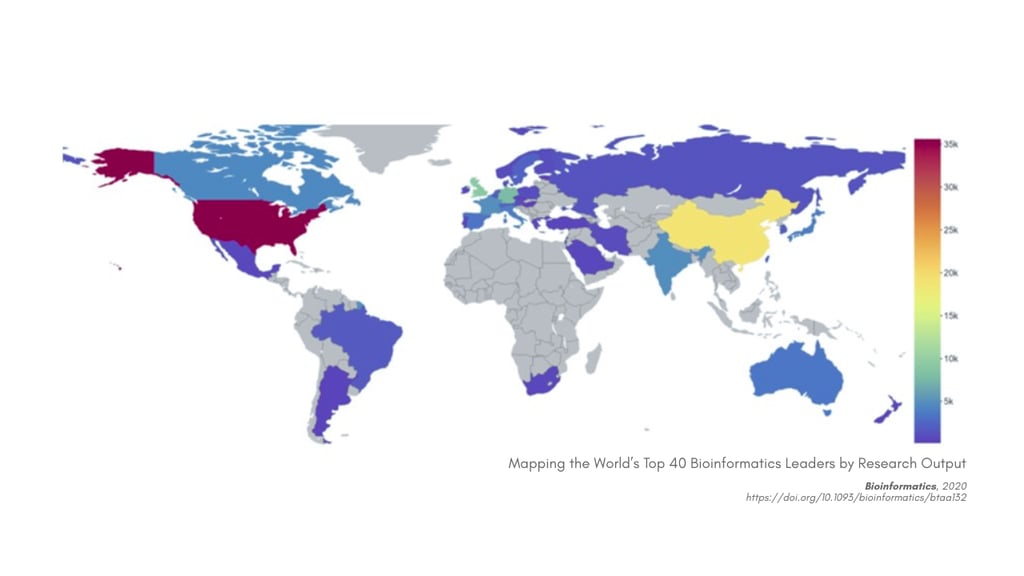The Rise of Bioinformatics in Modern Science


Over the last twenty years, bioinformatics has grown from a niche computational tool into a key part of biological research. This change is most clearly seen in the sharp rise of peer-reviewed publications in the field. While global databases like Web of Science or Scopus show that scientific output grows at about 4% each year, research in bioinformatics and computational biology often grows even faster, showing the field’s strong momentum.
The main driver behind this growth is the explosion of biological data. GenBank, one of the largest genomic repositories in the world, held 34 trillion nucleotide base pairs across 4.7 billion sequence records by the end of 2024, thanks to next-generation sequencing technologies. Data storage systems have had to grow just as quickly. Records show that the number of published biological databases increased from only 97 in 2001 to 588 in 2021, a sixfold rise in just two decades.
Alongside the data boom, tools for analysis have multiplied. OMICtools, a major catalog of bioinformatics software, lists over 23,000 different tools developed over the past 26 years. However, keeping these tools available remains a challenge. Research shows that only around half of the tools published ten years ago are still accessible today, highlighting the need for sustainability and reproducibility in scientific work.
These advances are linked to major economic and institutional changes. The Dimensions platform, which tracks research funding, recorded 7.1 million grants worth a total of USD 2.6 trillion by 2024, with nearly USD 594 billion active in that year alone. This reflects a peak period of investment in computational science infrastructure, including bioinformatics.
Several factors have pushed bioinformatics into the scientific mainstream. First, the cost and time needed for sequencing have dropped dramatically, and new multi-omics platforms have made large datasets easier to access. Second, the growing complexity of data, covering genomics, proteomics, single-cell, and spatial technologies, has created a demand for more integrated analysis pipelines. Third, artificial intelligence and machine learning have brought breakthroughs such as AlphaFold, speeding up drug discovery and synthetic biology. Finally, the COVID-19 pandemic made pathogen genomics a public health priority, turning bioinformatics into essential infrastructure.
Geography plays a big role in this story. A bibliometric study found that 78 countries produce 99% of all bioinformatics publications, showing a high concentration of expertise and resources. The leaders are in North America, Europe, and East Asia. In Southeast Asia, Singapore stands out thanks to strong institutional investment and national strategy. Indonesia, despite its rich biodiversity, is still in the early stages, with most research linked to a few universities and limited infrastructure.
The outlook for bioinformatics is highly positive. The global market is expected to grow from USD 25.8 billion in 2024 to USD 94.8 billion by 2032, with an annual growth rate of about 16.9%. This growth reflects both rising commercial demand in pharmaceuticals, agriculture, and biotechnology, as well as the constant increase in data generation and analysis.
In short, bioinformatics has become the computational foundation of modern biology. Its rapid rise is fueled by technology, data, AI, and strong investment. For countries like Indonesia, which hold both biodiversity and growing research capacity, there is a unique chance to invest in infrastructure, develop skilled talent, and build collaborations to take part in this global scientific frontier.
The Rise of Bioinformatics in Modern Science

(+62) 815-1304-5845
© 2025. All rights reserved.
Reach us
Got any questions?
Yogyakarta, Indonesia
